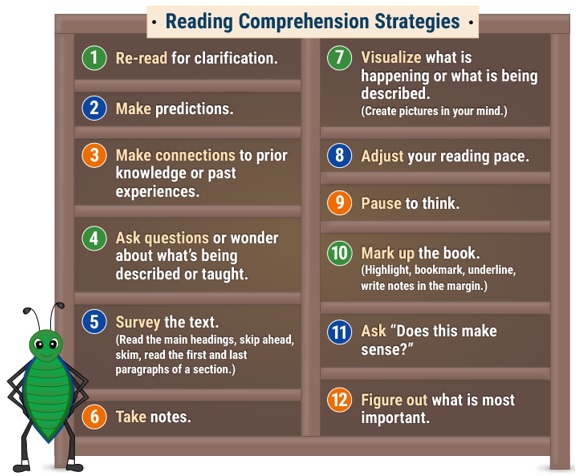A Teacher's Guide To Teaching Reading Comprehension Effectively
28th April 2025

Real reading happens when the words make sense, not just sound. It is about really getting what the words mean together. When a student reads but does not understand the story, are they actually reading? Not really! Did you know that over half of the kids worldwide finish primary school without being able to read well? That is a lot of children who need help.
Many teachers test reading by giving out stories and asking questions afterward. They hand out a story, ask some questions, and check the answers. However, educators who completed the teacher training certification in Hong Kong understand the importance of teaching comprehension, not just checking for it. Reading with understanding is a skill that gets better with practice and good teaching.
6 Essential Things Every Teacher Should Know About Reading Comprehension
So, if you want to know how to teach reading comprehension to your students, the below points can be of help:
1. Your Instruction Time Matters
You might think having students read every day is enough. But here's the truth: students do not get better at understanding what they read unless you show them how.
Many classrooms spend too much time on worksheets and not enough on teaching students how to think while reading. Giving questions after reading does not always help students understand better.
What you can do is set aside 15-20 minutes each day just for practicing comprehension. Use short, interesting texts and talk about what is happening in them. Show students how to summarize the main points and make predictions about what might happen next. Help students imagine what they read in their minds.
2. Keep the Focus on the Text
Sometimes reading lessons drift away from the actual reading part. You might find yourself doing word-matching games or vocabulary exercises that do not connect back to the story. Real understanding grows when students spend time with the text itself.
What you can do is ask questions that make students look back at the reading. Instead of personal opinion like, 'What would you do here?' ask questions like 'What made the character do that? Can you find the part in the story that shows this?' This keeps everyone focused on what the text says.

Source: allaboutlearningpress.com
3. Language Skills are the Foundation of Reading
Students who find speaking and listening hard usually face challenges with reading as well. If they don't understand certain words or how sentences work when they hear them, they will have the same problems when reading.
On the other hand, good readers can handle long sentences, understand words like 'however' and 'therefore,' and follow conversations in stories. All these skills come from having strong language abilities.
What you can do is read out loud to your students every day. Take a pause in between to explain tricky parts. Let students share their thoughts about the story with a partner or in a small group. Even five minutes of good conversation helps build better listening and speaking skills, which makes reading easier.
4. Knowing More About a Topic Helps Students Understand It Better
Think about this: when you read about something you already know a lot about, it is easier to understand, right? The same is true for your students.
If a student reads a story about space and has an idea of what planets and stars are, they will follow the story much better.
What you can do is group readings by themes or topics. For example, if you read a story about the ocean, follow it with a fact book about sea creatures, a short video about ocean life, or a class discussion about pollution. This approach helps students build knowledge on topics, which strengthens their reading skills.
5. Focus and Memory Play a Big Part in Reading Well
Do you find some students start reading well but get lost halfway through? It happens because of executive function - the brain skills that help us pay attention and remember things.
Skills like staying focused, keeping information in mind, and checking the depth of understanding help readers stay on track. Without these skills, even students who can read all the words might miss the meaning.
What you can do is teach students to stop after each paragraph and ask themselves, 'Did that make sense to me?' Show them how to mark important parts with sticky notes or highlights. These simple tricks help students stay focused on understanding.
6. Questions Should Help Students Think, Not Just Test Them
Most teachers ask questions after students read. But the best time to ask questions is while reading, not after.
Strong questions help students think more about what they read. It gets even better when students start asking questions. That is when they really become active readers.
What you can do is try 'thinking out loud' while reading with students. Stop and say things like, 'I wonder why the author chose that word?' or say things like, 'That was surprising- I did not see it coming!' Then let students do the same. Encourage students to come up with their own questions based on what they read. This makes them more curious and pay closer attention.
Watch Out for These Wrong Ideas About Reading
Let's clear up some common mistaken beliefs that might be holding your students back:
- If a student can read quickly and smoothly, they must understand everything.
The truth is reading smoothly (fluency) and understanding (comprehension) are different skills. Students need both!
- Some kids naturally 'get' reading, and others don't.
Understanding what you read is a skill that can be taught, just like math or writing.
- More worksheets lead to better reading.
Quality matters more than quantity. Real thinking and discussion beats filling out worksheets any day.
- Only language arts teachers need to worry about reading comprehension.
Science, history, and even math teachers should help with reading too. Understanding texts is important in all school subjects.
Bottom Line
Teaching reading comprehension is about giving your students tools to think clearly, learn deeply, and enjoy reading for life. While teaching online to Chinese students, try to focus on language, knowledge, and strategy instead of just ticking off worksheets. Help them become thinkers. With the right guidance, help every child become a confident, thoughtful reader.












